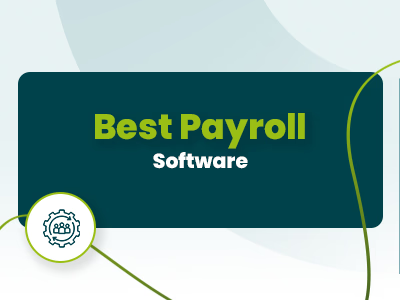Rana Abdur Rabb is a technical content writer at SF specializing in the project and construction management software category. He crafts clear, in-depth, and user-friendly content that helps project teams streamline processes for success. His unwavering work ethic drives him to deliver accurate and actionable content efficiently. Devoted to untangling complex industry jargon, Rana recharges his creative batteries by embarking on epic quests in the vibrant worlds of video games, comics, and anime.
Resources

Best Payroll Software
To help you make a better choice, our team tested the highest-rated payroll solutions, consulted countless business owners, and sifted through hundreds of reviews to find the most functional and user-friendly solutions.Payroll automation and simplification tools have become essential for businesses aiming to streamline daily operations, including salary administration, international
Read More
13 mins read

Deputy Vs Tanda: Which Solution Gives You Better Control Over Your Workforce?
As companies continue to grow, so does their employees count, and with growing workforces come greater challenges for Human Resources (HR) teams. These challenges can range from time management and HR operations to payroll processing and supporting complicated onboarding and scheduling requirements. Given the nature and complexity of HR management,
Read More
8 mins read

TrueBill Vs NerdWallet: Your Financial Advisor!
In an age of digital banking, instant transactions, and subscription overload, managing personal finances has become both more convenient and more complex. With financial data spread across multiple platforms, users need reliable tools to centralize, analyze, and optimize their money management. That’s where personal finance apps come in, helping streamline
Read More
5 mins read

PocketGuard Vs TrueBill: Choosing The Right Finance Software
Managing money is easier than ever if you have the right tools. In today’s crowded market of budgeting software, PocketGuard, and Rocket Money (formerly TrueBill) stand out for their smart features and user-friendly design.Both platforms help you track spending, lower bills, and plan your financial future. However, they take different
Read More
5 mins read

PeopleSoft Vs Salesforce: Which Software Is Right For You?
How do you choose the right HR software when your workforce demands efficiency, engagement, and scalability? The stakes are high. The wrong platform can lead to clunky workflows, limited insights, and frustrated teams. PeopleSoft and Salesforce are two powerhouse solutions that bring very different strengths to the HR table. This comparison
Read More
6 mins read

Oracle Cloud Vs PeopleSoft: Choosing Your Enterprise Path!
As organizations embrace digital transformation, human resource (HR) departments are leading innovation across industries. Oracle offers two major solutions in this space: Oracle Fusion Cloud ERP and PeopleSoft. Both are powerful enterprise-grade platforms used by organizations worldwide. PeopleSoft is a long-standing on-premises system that has been trusted for decades, while
Read More
8 mins read

Insperity Vs TriNet: Which PEO Software Is Right For You?
When your business starts to outgrow manual HR processes, Professional Employer Organization (PEO) software offers a smarter way forward. A PEO is a service that acts as a co-employer, handling essential HR functions such as payroll management, benefits, compliance, and onboarding on your behalf.These platforms combine expert guidance with purpose-built
Read More
7 mins read

Workstream Vs Workflows HR: Which One To Choose?
When it comes to managing people, hiring efficiently, and staying compliant, the right human resource (HR) software isn’t just helpful. It is essential. But choosing between platforms can be challenging, especially when each one is built with different goals in mind. Among the many options available, two well-known platforms stand out
Read More
7 mins read



